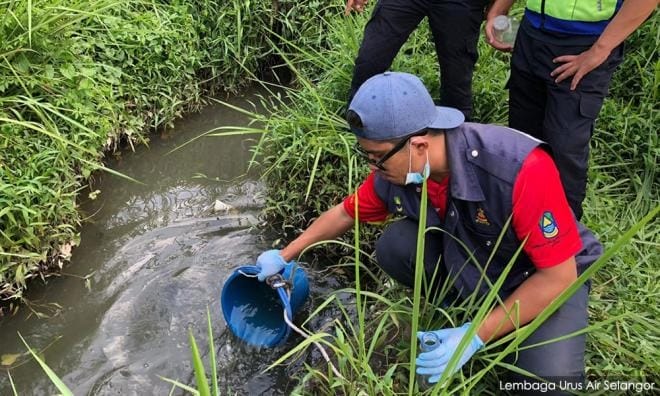This Is Why Klang Valley Keeps Getting Water Cuts & It’s Annoying AF
Once again, Klang Valley sees itself in the middle of an unscheduled water cut.

Subscribe to our Telegram channel for the latest stories and updates.
Tempers are flaring up online with angry Malaysians demanding an explanation as nearly 1,300 areas in Kuala Lumpur, Petaling, Klang/Shah Alam, Kuala Selangor, Hulu Selangor, Gombak and Kuala Langat are affected by the water supply disruption that began on 3 September.
So, what’s happening?
Several water treatment plants – Sungai Selangor Phase 1,2,3 and Rantau Panjang Water Treatment Plants- were shut down at 10 am on 3 September, Thursday due to raw water pollution in Sungai Selangor.
Despite efforts to dilute the polluted water by pumping in water from the Sungai Tinggi Dam and a pond in Bestari Jaya, barometres showed that the odour pollution was at the 1 tonne level at 7am on 4 September. The reading must show 0 tonne for the water treatment plants to reopen again.
SIARAN MEDIA: LOJI RAWATAN AIR SUNGAI SELANGOR FASA 1, 2, 3 DAN RANTAU PANJANG MASIH BELUM BEROPERASI pic.twitter.com/N1x97wIkLU
— Air Selangor (@air_selangor) September 3, 2020
Following investigations by several agencies, including Air Selangor and Selangor Water Management Authority (LUAS), it is suspected that effluents with solvent-like odour from the Sungai Gong industrial area is the cause of the pollution.
Currently, odour sampling is being done around Sungai Gong, because we suspect industrial premises there may have released effluents with solvent-like odour into the river.
Selangor Water Management Authority (LUAS) via NST.
This is not the first time pollution from industrial areas has caused Klang Valley’s water cuts, though.

Sungai Gong is one of the rivers that flows into Sungai Sembah, which feeds into the Sungai Selangor where the Rantau Panjang water treatment plant is located 17 kilometres downstream.
Industrial waste dumping at Sungai Gong is also one of the main sources of pollution of Sungai Selangor, leading to several water cuts in the last decade.

In August 2013, diesel pollution dumping into Sungai Bakau and Sungai Gong sparked a water crisis in the Klang Valley on Merdeka Day.
Then a year later in 2014, industrial hydrocarbon waste dumping into the river caused another widespread water cut.
Earlier in March 2020, a solvent-like odour at Sungai Gong and Sungai Bakau led to another water disruption incident.
This September’s water pollution incident has been traced to a machinery maintenance factory in Rawang that had failed to store oil waste according to conditions set.
It is determined that this factory had been compounded RM60,000 for the same offence in the past before. The authorities have ordered the factory shut.
So what’s being done to fix this problem?
Well, since 2019 the Selangor government has been threatening the illegal factories with shutdowns if they fail to register themselves by this year.
The state government has also seized the lands where these illegal factories operate, while culprits have been charged under the Environmental Quality Act 1984 and the Selangor Waters Management Authority Enactment 1999.
FYI, Malaysia also has the Water Services Industry Act 2006, which carries the death penalty for those whose action of contaminating a water source had resulted in death.
Environmental Protection Society of Malaysia vice-president Randolph Jeremiah told NST in 2019 that it was important to find the culprits and impose severe fines and punishment as a deterrent.
Monitoring and enforcement can be difficult due to the size of water catchment areas. However, we have adequate laws.
Randolph Jeremiah, Vice-President Environmental Protection Society of Malaysia to NST.
President of Association of Water and Energy Research Malaysia S. Piarapakaran points out that laxity is a reason for the frequent pollution of water sources. He tells NST that it is sign of negligence by the authorities in protecting river reserves.
He also says that LUAS should have intensified checks along riversides and get tough with the unscrupulous parties who are channelling effluents or dumping waste into rivers and other water systems.
Share your thoughts with us on TRP’s Facebook, Twitter, and Instagram.
She puts the pun in Punjabi. With a background in healthcare, lifestyle writing and memes, this lady's articles walk a fine line between pun-dai and pun-ishing.








